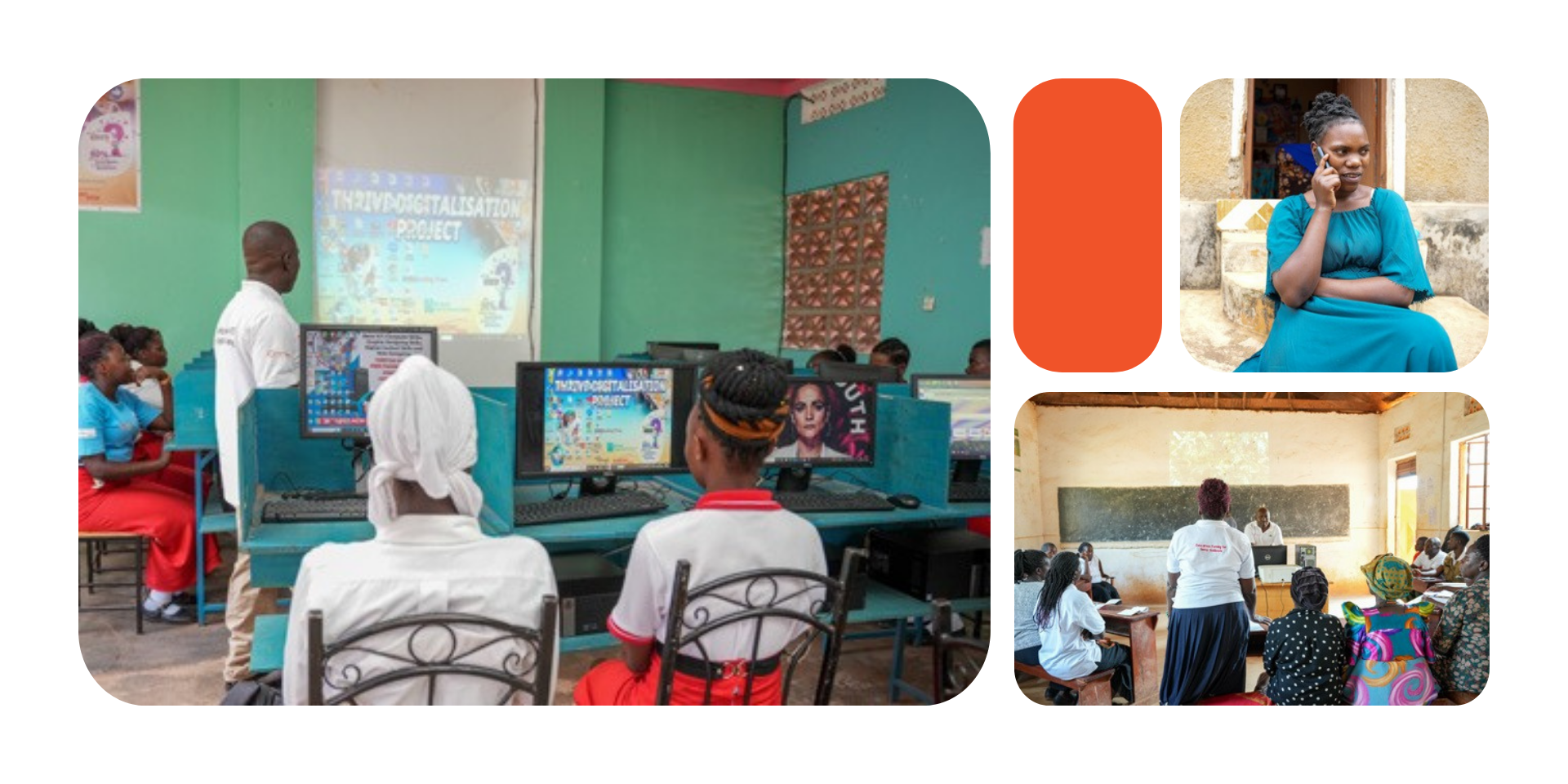
The Thrive Digitalisation Project, implemented by horizont3000 in East Africa, is a regional initiative designed to strengthen the digital capacities of civil society organizations in Uganda, Kenya, and Tanzania. Supporting over 25 local partner organizations, the project promotes the integration of digital tools and methods into development work—ranging from mobile apps for smallholder farmers to ICT resource centers that equip youth with practical digital skills. Rooted in the Principles for Digital Development, Thrive fosters innovation, digital inclusion, and gender-responsive approaches across diverse sectors.
In this interview, we speak with Joel Chemusto, Project Manager at the horizont3000 Regional Office East Africa, who shares insights into the project’s impact, challenges, and vision for the future. To showcase these efforts, seven short video clips were produced together with partner organisations and can be viewed on horizont3000's YouTube channel.
Joel: I serve as the Project Manager for the Thrive Digitalisation Project at horizont3000 Regional Office in East Africa. My role involves coordinating the implementation of the project across Uganda, Kenya, and Tanzania. I support over 25 partner organizations in building digital capacity, implementing innovative ICT solutions, and integrating the Principles for Digital Development into their operations. I also provide ongoing technical guidance, training coordination, and help shape strategic direction for digital transformation across the region.
Joel: The change has been significant. Over 25 partner organizations now have strengthened capacity in digital Monitoring & Evaluation, online facilitation, online visibility, data privacy and protection, and the use of open-source software. Applications like the iKnowFarm app and FAMIS have transformed how farmers access market and agricultural information, while toll-free platforms in Tanzania have expanded legal aid outreach. Organizations like YARD and AFIRD now run functional ICT centers, training hundreds of youth and students in digital marketing, agronomy and other employable skills. Importantly, there has also been a cultural shift toward digital inclusion and gender-sensitive programming, with women now actively participating and benefiting from these digital innovations.
Joel: One of the biggest challenges was aligning training schedules with the often-packed calendars of partner organizations, which sometimes led to low turnout. We overcame this by adopting flexible support models, including self-paced learning materials on the Moodle platform, follow-up coaching sessions, and the introduction of “wildcard” topics tailored to specific partner needs. Additionally, the rapid pace of technological change required us to remain adaptive/agile, which we managed by extending the project to accommodate training on emerging topics like artificial intelligence, PowerBI, and Canva.
Joel: A standout example is the use of the iKnowFarm mobile app by smallholder farmers. What started as a modest digital tool is now being used by nearly 60,000 users to access agronomy tips, weather forecasts, and real-time market prices. Farmers have reported improved bargaining power, reduced post-harvest losses, and greater market access. Similarly, youth trained at the YARD ICT Resource Center have launched digital businesses, marketed their tailoring and phone repair services online, and even conducted product sales via social media—testifying to the effectiveness of the skills they acquired.
Joel: I envision a future where digital tools are seamlessly integrated into the DNA of development work across all partner organizations. That includes more tailored and sustainable solutions that empower marginalized groups especially women and youth to participate meaningfully in economic and social processes. I also hope to see stronger investment in AI and advanced data analytics, as well as the designation of in-house focal-point persons at partner organisation level to ensure the continuity and scaling of digital transformation. At the community level, I dream of more rural households in East Africa accessing e-learning, and e- services through affordable (if not free) and user-friendly platforms.